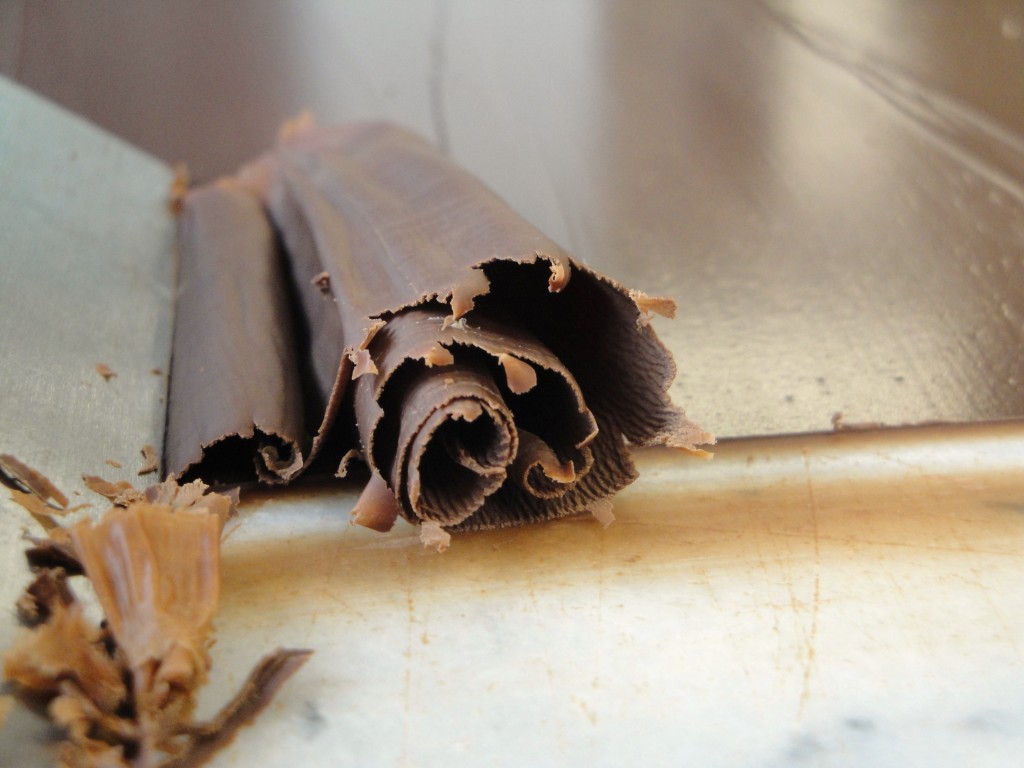
Picture of chocolate shavings
How To Temper Chocolate
Is it necessary to temper chocolate? A question I am frequently asked. The answer depends on what you are planning to do with the chocolate. For making items such as chocolate mousse, chocolate sorbet, chocolate cremeux and most fillings for chocolates or truffles tempering is absolutely not necessary.
For preparing items such as chocolate decorations, dipping truffles or molding chocolates, you have to use tempered chocolate. There is no other way around it. Anytime real chocolate is used to dip products such as cookies, petit fours, strawberries, chocolates or is used for decorative pieces, the chocolate has to be tempered. When chocolate is not tempered, essentially only melted, and then used for dipping truffles or any of the above mentioned items, it will not harden to a beautiful glossy finish with a crisp snap. Chocolate which is not tempered may take hours before it hardens and when it finally does, it will be dull in appearance with a grayish cast and have a very brittle and undesired texture. So it is clear to see, when chocolate is used for finishing work tempering is necessary.
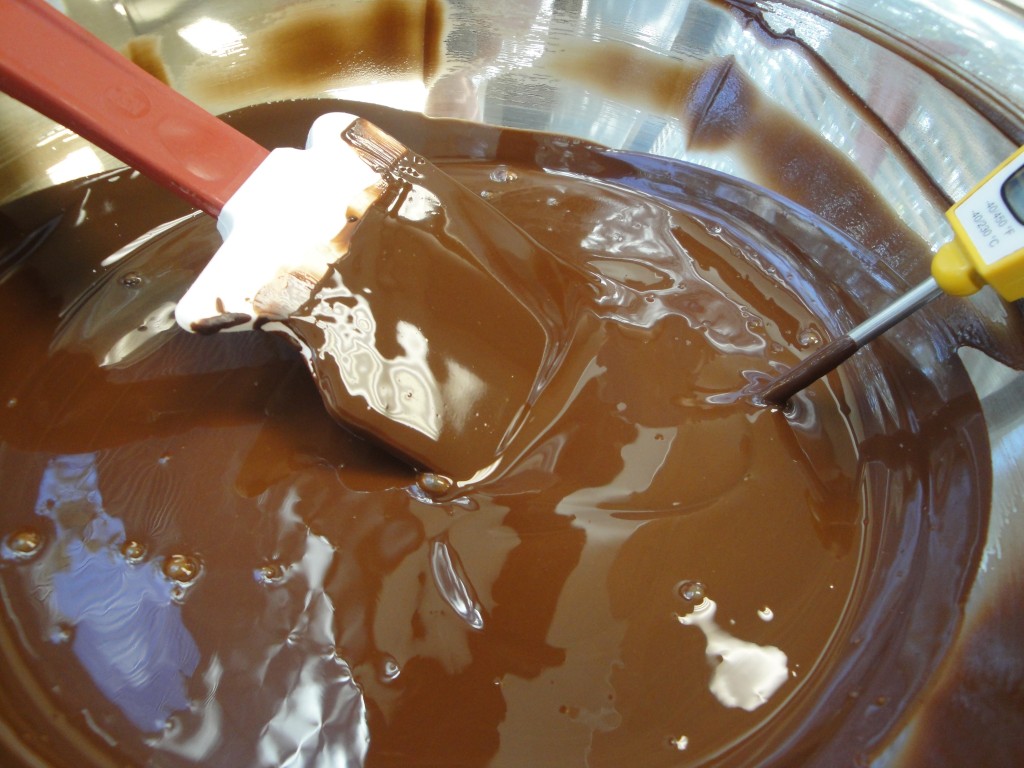
Picture of instructions below, step 2 and 3, melting chocolate for tempering
Products such as chocolate flavored coating do not need to be tempered. These, by law, are not labeled chocolate because they are not. They are basically a type of a pseudo chocolate since they do not contain 100% pure cocoa butter as real chocolate does.

Picture of instructions below, seeding chocolate for tempering, step 4
So why do we need to temper chocolate? The answer is simple; chocolate contains cocoa butter and the cocoa butter crystals become unstable when melted. When the chocolate is properly tempered, the cocoa butter crystals will become stable again. When chocolate is tempered correctly and consequently cocoa butter crystals are correctly stabilized, the result will be chocolate which hardens perfectly with a shiny surface and has a noticeable audible snap.
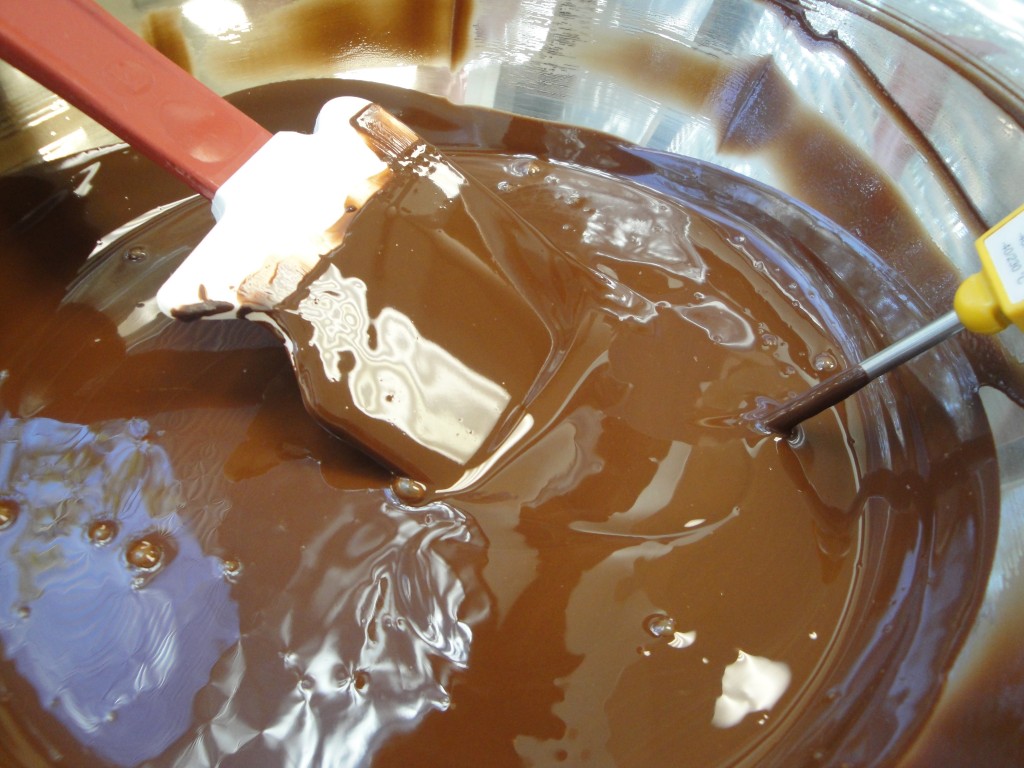
Picture of instructions below, step 4 and 5, tempering chocolate
Professional pastry chefs and chocolatiers work with couverture (koo-vehr-TYOOR) chocolate. Couverture chocolate is chocolate which contains a minimum of 32% cocoa butter. Do not confuse this number with the number you may see on chocolate packaging such as 60% or 70% cocoa. These numbers refer to the cocoa content, NOT the cocoa butter content. Couverture chocolate is prized since the 32% minimum of cocoa butter ensures that this type of chocolate will melt perfectly. Ever tried to melt ordinary chocolate chips? It did not melt very well did it? Non couverture chocolate is very low in cocoa butter and will not melt as you will need it to. In fact, most chocolate available on the grocery store shelf is too low in cocoa butter content for above mentioned uses. If it is not labeled couverture, it simply is not. In Chocolate THE most expensive ingredient is cocoa butter and if it contains 32% or higher of this prized fat, you can count on the fact that it will be labeled as couverture chocolate.
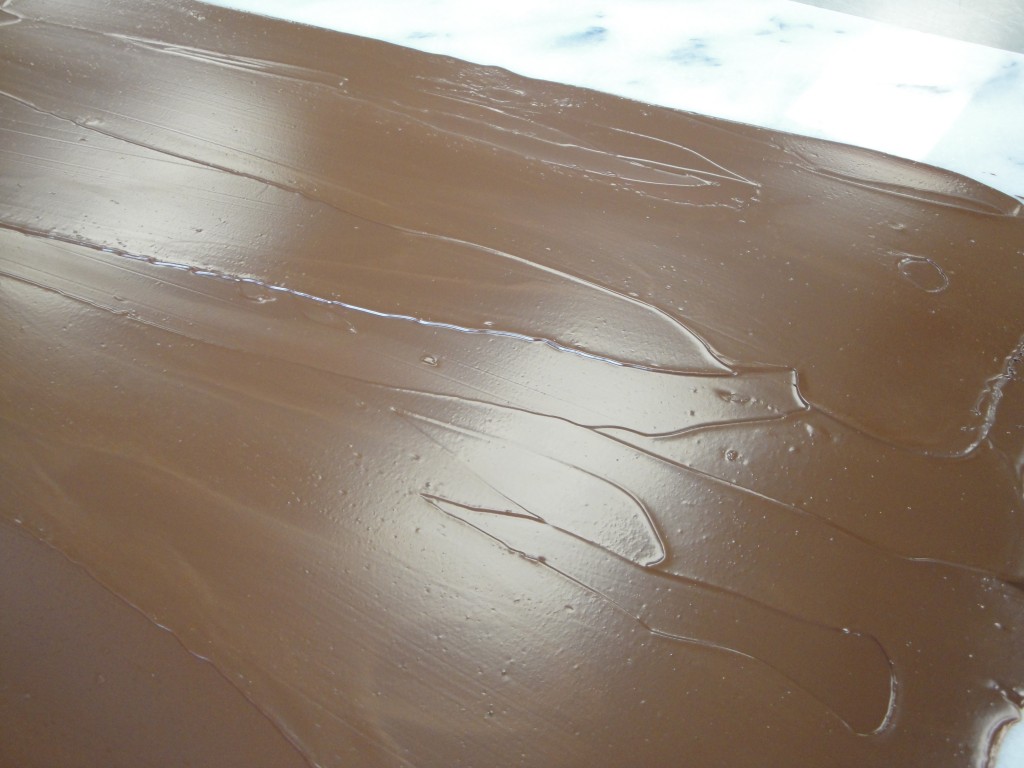
Picture of tempered chocolate spread very thin
So when we want to make chocolates, truffles, chocolate decorations and so much more we have to purchase couverture chocolate. Another option is to purchase good quality chocolate and add some food grade cocoa butter to bring the cocoa butter level up to couverture chocolate levels. About the flavor you ask? Adding cocoa butter will only enhance the flavor of the chocolate and make the mouth feel much better. In America, food grade cocoa butter can be found in Whole Foods market in the, yes, cosmetics department. In Europe it is sold in many supermarkets. To non couverture chocolate add about 10% of cocoa butter to the chocolate and then melt. Basically to 1 lb (455 g) of chocolate add 10% cocoa butter (1 ¾ oz) 45 gram. Remember, couverture chocolate does not need extra cocoa butter since it already contains a minimum of 32% cocoa butter.
Several methods of tempering chocolate exist and they all work if correctly performed. When a small amount of tempered chocolate is needed, the ice bath method of tempering chocolate works well. (See the ice bath method of tempering chocolate on this site). Another method frequently used is the seeding tempering method or pre-crystallization tempering method. This method is described below.
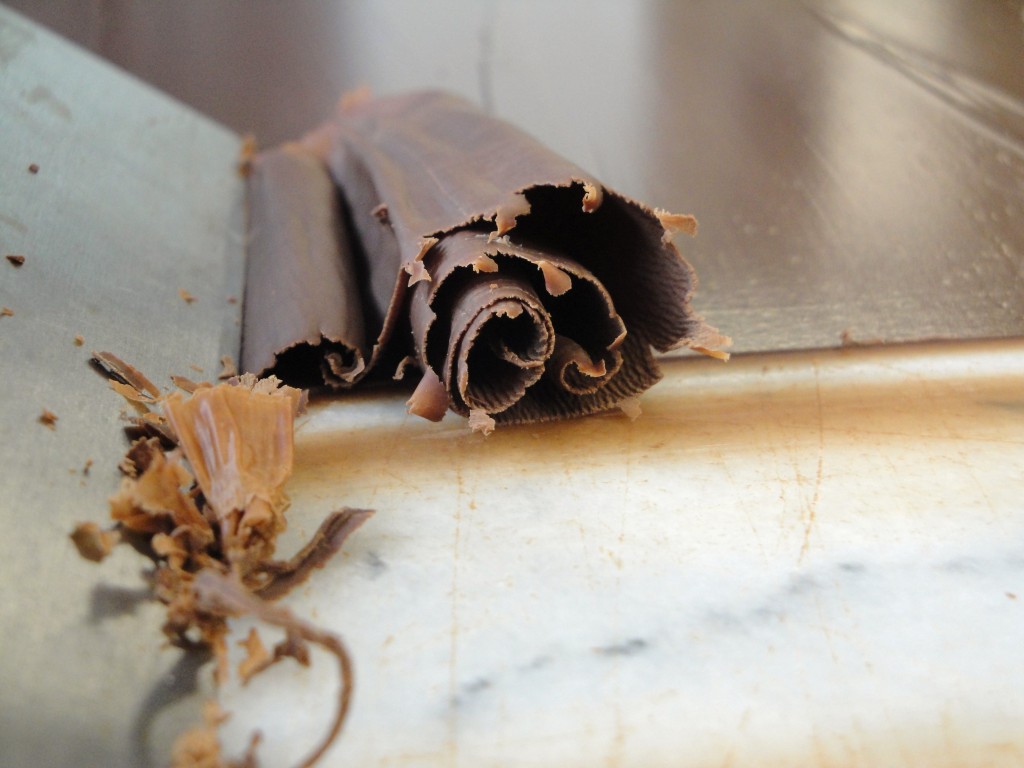
Getting it all together!
Chop the chocolate couverture in small pieces. If you are using non couverture chocolate, scale the chocolate and then calculate 10% of cocoa butter. (1 lb (455 g) of chocolate add 10% cocoa butter (1 ¾ oz) 45 gram.) (In the below described method, the cocoa butter will be melted with the ¾ amount) Remember, couverture chocolate does not need extra cocoa butter since it contains enough.
To make chocolate shavings as shown in the pictures spread the tempered chocolate very fast and very thinly on a marble or granite slab. Let sit for a few seconds and then using quickly scrape the chocolate using a scraper into chocolate shavings.
How to Temper Chocolate- using the seeding method or pre-crystallization tempering method.
- Chop the chocolate couverture in small pieces, about the size of chocolate chips. Place ¾ of the chopped chocolate in a bowl. Reserve the remaining one fourth of chocolate.
- Fill a saucepan with about 1 inch (3 cm) water and bring to a boil. Once boiling reduce to a very low simmer and place the chocolate bowl over the water.
- Stir constantly using a rubber spatula to 115-120°F (46-48°C). Remove from heat.
- Add the remaining one fourth of chopped chocolate pieces to the melted chocolate and stir until the chocolate is nearly lump free. Check the temperature, it should be at or slightly below 90°F (32°C) for dark chocolate and two degrees lower for milk or white chocolate. The chocolate is now in temper.
- If the chocolate is much colder and very thick, place it for just a few seconds over low simmering water. Remove from heat and stir, check the temperature, it needs to be below 90°F (32°C) for dark chocolate and two degrees lower for milk or white chocolate. (DO NOT stir over the simmering water and heat all the way up to the above mentioned temperatures. The residual heat from the bowl will quickly tilt the temperature way over the allowed temps.)
- A smart way of keeping the chocolate in a fluid sate while you are working is to place the chocolate bowl in another bowl filled with water of 90°F (32°C) or slightly higher.
- If the chocolate hardens or you have leftover, you can always re-temper the chocolate as indicated at a later time.
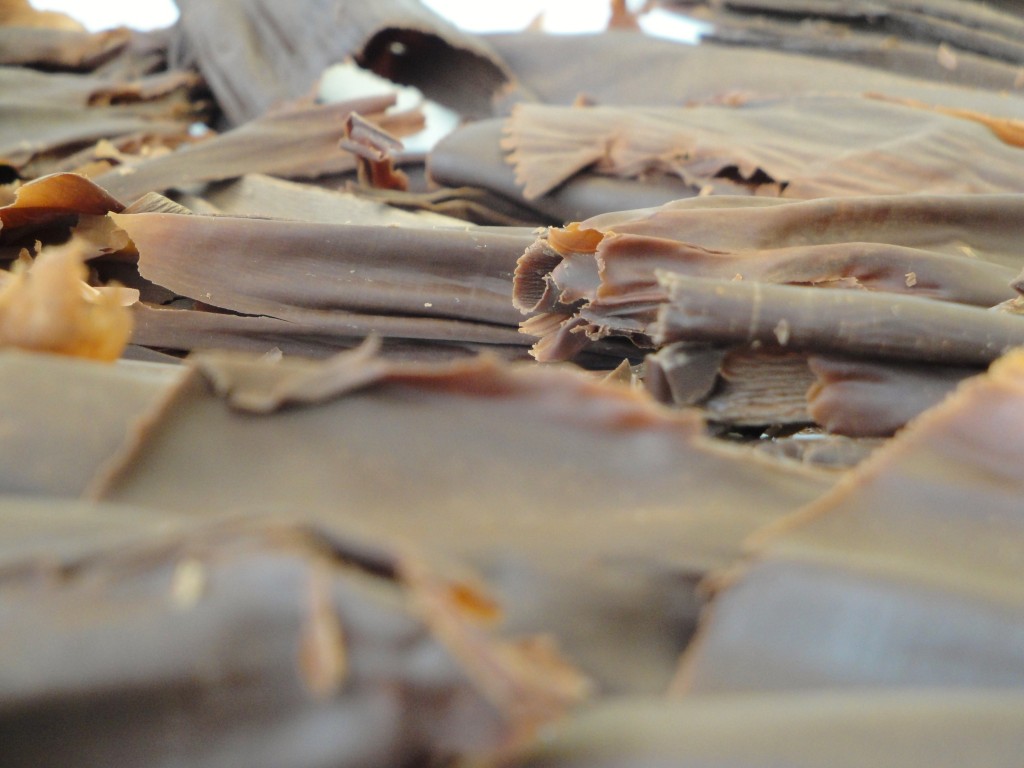
Picture of chocolate shavings
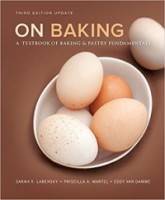
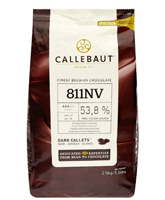

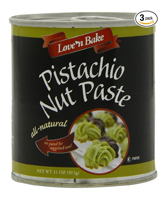
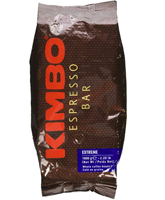
This is fabulous information Chef Eddy! Everyone interested in baking should read this!
Thank you for this information! I was just preparing to go do chocolate truffles and i hopped on foodgawker to feast my eyes a bit before i do, what luck to see this post! 🙂 Would it work if i put the chocolate in a bowl with water above a candle or sth, to keep it in temper longer? I did truffles before and got the results as you described, when the chocolate was still tempered, it was nice and glossy, when it was no longer, it was dull and grey. Thank you again. 🙂
Hi Maja,
Glad I can help with tempering chocolate. This time you will have good results! Just always keep the temps in mind. About the candle, as long as the water does not go over 95F you should be fine! Good luck,
Thank you Diana.
Eddy.
Thanks for posting this, Chef Eddy. Tempering chocolate was kind of scary at first, but each time I do it now, I get more and more confident! ;0) Just curious, is this method more preferred by you than other methods? Thanks!
I’m glad i found this post. Got to learn so much about tempering chocolate, about which i really had no idea. Thank you so much.
Thank you for your kind reply. And again for your post. I did the truffles and had to reheat the chocolate once (i poured some extra hot water in the bowl with water) and only one of around a 100 truffles lost it’s colour. 🙂
This is the best information ever. Thanks for sharing!
Ramya,
Thank you for your nice comments.
Eddy.
Hi there,
I found your article to be quite interesting and useful. However, I do have one question. I am an 11th grade student doing a science fair project and I would like to know how to test “which chocolate melts faster?” What factors must I consider to test this? I am still a bit confused about how I am to know which chocolate melts faster…do I look at the fat % on the nutrition facts? do I use a particular type of chocolate? how would I do this? thank you!
Hi Bubbles!
That is fantastic being so young and already doing a project on chocolate!
The chocolate which melts faster will be chocolate labeled as couverture. In larger grocery stores you will be able to find this type. Chocolate which will melt slowly and not well at all are chocolate chips made for cookies. Remember, some chips will be labeled chocolate flavored chips or such which means that it does not contain the highly prized fat ( cocoa butter) but it is made with some sort of low quality fat. Basically an imitation chocolate. Hope this helps and good luck with your project!
Eddy.
hi there.so far,this was the most useful article I read about tempering chocolate.thank you for sharing it.I wonder that should I store leftover in refrigerator or in freezer?and for how long could it be stored?thanks!
Hi Duygu!
Thank you for the nice compliment.
Chocolate is best stored at about 68-70F or 18-20C. Chocolate keeps for 1 year or more if well wrapped and stored away from strong odors. Remember, if you make something with chocolate, for example truffles, than this type of chocolate product should be stored in the refrigerator. Again well wrapped or sealed. (Onions are not a good mix for chocolate!)
All the best and I will add more articles about chocolate soon.
Eddy.
Hey Eddie,
I’m in 8th grade and have to do a science project (just like Bubbles) ok, so i really like to cook, i figured i should do a project involving food so i could at least have a little fun with it. i’m leaning towards a project on tempering chocolate and found your article very helpful. (I’ve already dipped some pretzels using this technique, haha. they were delicious.) i was wondering if you had any ideas on a research question/topic.
Hi Monet,
I think it would be amazing for your class to see a batch of chocolate ,which is not tempered, and use it for dipping strawberries or pretzels and watch this chocolate take hours before it starts to harden. Also make a batch of tempered chocolate and dip the above and see the chocolate firm within a minute or two. You could perhaps also dip products in untempered chocolate at the house a day or two before you show your project. After a couple of days, untempered chocolate becomes dull, crumbly and loses it beautiful dark brown color. This all happens due to the cocoa butter crystals which become unstable when melted. By tempering chocolate, you stabilize the cocoa butter crystals which ensures a beautiful sheen and a crisp snap. At your age tempering chocolate is quite fantastic! The reason why I have tempering chocolate on my blog is because it is very difficult for a lot of people.
All the best with your chocolate tempering project Monet!
Eddy.
Mr. Van Damme,
I am also in eighth grade and beginning a science project on tempering chocolate. Attempting to find the exact temperature and times needed to temper white, dark, and milk chocolate solely through experimentation, it will, needless to say, require a good amount of chocolate. Is there a place I can order good quality chocolate(so the judges can appreciate the flavor) at a reasonable price?
Thank you,
Seth
Also, I would be glad to also find a place that I can purchase cocoa butter to add to non couverture chocolate that I can find almost anywhere. Your help is appreciated as I need to have my supplies before Christmas! Thank you.
Seth,
I would go online and Google “where to buy couverture chocolate” Good brands which are easy to find and are not very expensive include Callebaut and Cocoa Barry. I would recommend buying couverture chocolate instead of buying regular chocolate and adding cocoa butter to it.
You could also contact wholesale food suppliers in your area and ask if they could make an exception and sell to you. Before you purchase, make certain you have the exact name and type of the chocolate couverture. Seth, if the chocolate box or wrapper that you are buying is not labeled ‘Chocolate couverture” it 100% will not be couverture! Make sure they are not trying to sell you the wrong thing. A lot of sales people do not know the difference between chocolate and couverture chocolate. Callebaut and cocoa barry and many others make regular chocolate and couverture types.
If you decide to get regular chocolate you can find cocoa butter online and in Whole Foods in the cosmetics department.
All the best with your project Seth!
Mr. Van Damme,
I appreciate your help in finding the couverture chocolate. Because of the expense of dark chocolate, we substituted it with semi-sweet. Now I have run into another problem. Because of the varied answers, I decided to ask a professional. Because white chocolate lacks cocoa liquor, is it considered chocolate?
Thank you,
Seth
Seth,
Chocolate companies label white chocolate as white chocolate and professional pastry chefs worldwide name white chocolate also white chocolate. However, there is always the issue that white chocolate does not contain cocoa liquor, also named cocoa mass (The entire ground cocoa bean) . However, real white chocolate does contain real cocoa butter, the light creamy colored fat from the cocoa bean.
What certainly is NOT white chocolate are products labeled ‘white chocolate flavored chips” or any other types of names to make you believe it is white chocolate. The fat in REAL chocolate is always and must be by law, be cocoa butter, if it is replaced with hydrogenated fat, it is not real chocolate.
Seth, There is no question that semi sweet or dark chocolate is in a way “more authentic” since it is made with the entire cocoa bean instead of only the fat from the cocoa bean, however, if the chocolate is made with cocoa butter, it is considered real chocolate, regardless if it is white, milk or dark chocolate.
All the best! Eddy
Hello Eddy, my question is by regular chocolate as you mentioned before…Does that mean chocolate chips (like for cookies)so can you
temper it if you add the cocoa butter from say Whole foods? I have a ton of chocolate chips bags lying around these bags from Nestle and Ghiragelli. I can’t find any amounts of cocoa butter on the bags but the ingredients says coca butter. Thank you for your help.
Hi Sarah,
Hi Sarah, thank you for your question.
Yes you can add cocoa butter to plain chocolate chips, the type mostly indented for chocolate chip cookies. However, these chips are made with chocolate which is usually not as finely conched as a good quality tablet chocolate. Well Conched chocolate will be very smooth and will have a particle size so small that the particles are indiscernible to our tongue. Usually plain chips will have a lesser smooth feel on our tongue due to the fact that it is conched less. So adding cocoa butter to chips is a possibility, but it will not give you the smoothest chocolate.
If you are planning (After all it is Valentine’s week) to dip strawberries in chocolate with these chips, you can along with some cocoa butter, always add 10% oil (choose neutral flavor). Adding some oil will NOT make the chocolate harden as crisp, but for strawberries it would work just fine.
All the best to you!
Eddy.
Hello! I’m JungA Chae. I actually went to college to take a baking class four years ago in Korea. However, the breads and cookies are different than Korea’s so I feel like learning a new things. I will work hard as much as opening a baking class in Korea. I wish I would like to learn about dibeties’ breads and cookies because I was a nutritionist in Korea, so I’m interested in it.
I tempered my chocolate and everything was turning out fine. I was covering some truffles that I
was making and towards the end of the supply of the melted chocolate it got so hard I could’nt
do anything with it. What did I do wrong?
Your website is really great, fabulous pics, and so much detailed information in regards to recipes and techniques. The icebath method of tempering chocolate which we briefly discussed in class should help out with the smaller portions of chocolate as you mentioned. I thought your black currant cremeux that we sampled in class was excellent, and with the exception of the puff pastry crust it sounds fairly easy to prepare. I might try it with one of the other tart doughs you have shown us. I am hoping we might make the English Toffee recipe if the opportunity arises. I am enjoying your class but gaining too much weight.
Hi Eddy..
your website is awesome…well organized..beautiful pictures…I want make one…
This is a great reminder of what couverture chocolate is and how the cocoa butter affects the chocolate. I didn’t fully appreciate what tempering it truly does to the overall product chemically and physically.
Hi Chef,
I have been researching chocolate recipes since learning the tempering process in class. I used this exact technique yesterday and drizzled chocolate over a cheesecake. It was delicious and the color of the chocolate was amazing! Going forward, my recipe search starts here…thanks!
you are cool i love chocolate
Hello!
I was googling chocolate making and voila! Up pops your website, and I am so glad that it did! Now I have another great site to explore. My son has dietary issues and among many other things cannot have sugar, but can have honey. I must admit that I know very little about chocolate making, but I have purchased organic cacao paste (solid, 100%) and cocoa butter and would like to temper this. I guess the first question is – how much cocoa butter is in cacao paste? Is it possible to combine these and use honey to make chocolates?
Hello Chef,
I am just a home cook that loves sweets. But I have a great love & respect for chocolate & I am wanting to learn more about how to work with all types of chocolate. I found your site by looking for how to make couverture. I understand it better by reading your post. So if I want to make it I can add 30% or more coco butter right? But if I want to make mine compleatly from scratch could you tell me how? I know I need the coco butter, but would I use a chocolate powder or paste to this (or is it best to use a good “chocolate bar”)? And do I need a oil of any kind and do I had heat to get it all incorporated?
I would love to see a recipie on how to do this & learn more.
I have seen homemade couverture shaped into cones & it is shaved over drinks, desserts, or melted down into a wonderful hot chocolate. I’ve seen the cones & disk have items in it from nuts, coconut flakes, chilie powders to chunks of fresh coco butter. This is what I’m hoping to make.
Thank you so much in advanced for your help…
I am a new fan of yours!!
Hi Chef, thanks for explaining the tempering process of chocolate. You actually make it look easy! I’ve always been intimidated by the process of tempering chocolate, therefore I usually just take the easy way out by using chocolate flavored coating. Since watching your demo, I feel a little more comfortable in trying to temper chocolate and will definitely try it out soon. Also, thanks for sharing the tip on the couverture chocolate!
Hi Chef, thanks for the recipe I’ll go home and try this tonite, i have tried to temper chocolate for a while following a day course on chocolate making, I got the hang of it, but recently I produced the chocolate fine and shiny but then after a few days it blooms, not sure what the problem is?
Temper chococlate is not easy to do. It will time and patience to get right.
I am so glad that I now have a better understanding of tempering chocolates. Before I thought it was just a matter of melting the chocolate, dipping strawberries in and viola you have chocolates covered strawberries but there has been times where my chocolate would never harden. Learning about this definitely helped me make more sense of it.
I’m happy this information was incorporated into our class. I’ve worked with chocolate before, and now I know how to avoid the dreaded bloom of untempered chocolate! Though tempering takes some practice, it really makes all the difference with upping the quality of our desserts.
Thank you for teaching us how to properly temper chocolate. Before taking your Chocolates class, i had tried dipping strawberries, cookies, and cake pops in chocolate and was heartbroken to find that sometimes the chocolate would not harden or worse, would develop that ugly grayish white bloom, and now I know that it’s because the chocolate went out of temper. It has been enlightening to learn the science and art in the methods of tempering chocolate. My favorite is the cocoa butter method.
There are 4 way to Temper Chocolate; they are seeding, tabling, microwave oven and coca butter.